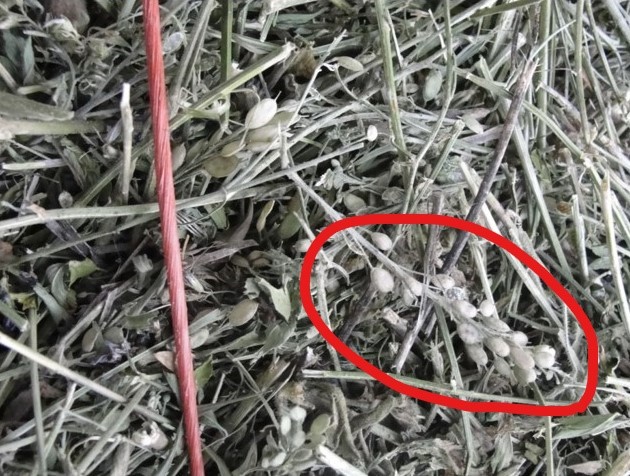Hoary Alyssum in Hay – Ask the Expert

Q: We suspect we have hoary alyssum in our hay. We’ve noticed our horses are stocked-up, but we are not sure if its from hoary alyssum or because all of the snow is limiting their ability to walk around. Can you confirm if this is hoary alyssym in our hay?
A: Yes, hoary alyssum is in this hay.
Circled in red you can see one of the seed heads in the photo.
Small, oval seed pods that become translucent as they mature showing the small brown to black colored seeds inside the pods identifies this as Hoary Alyssum.
We recommend you immediately stop feeding the hoary alyssum-infested hay. Hoary alyssum only affects horses, so the hay can be fed to cattle, sheep and goats.
Horses react differently to hoary alyssum, but signs of toxicity are usually seen 12 to 24 hours after a horse ingests the plant.
Common signs include swelling and fluid build-up in the lower legs (e.g. “stocking-up”), a fever of 103F or higher, stiff joints, and an unwillingness to move. More severe cases can progress to laminitis.
Mild stocking up is most common; however, more severe signs can occur in horses eating hay with more hoary alyssum or when ingesting the hoary alyssum-infested hay for longer periods of time.
Clinical signs normally go away with supportive treatment 2 to 4 days after removing the infested hay. Horses with laminitis may take more time to recover.
